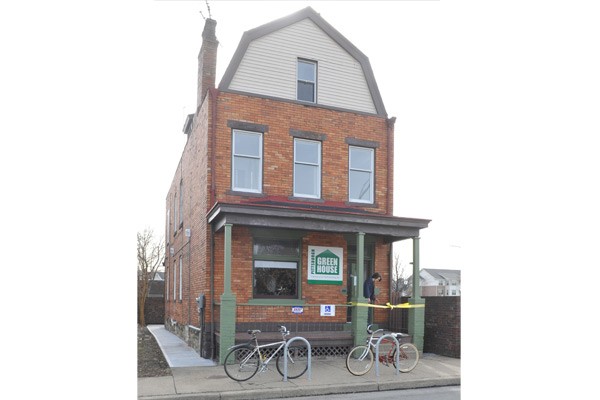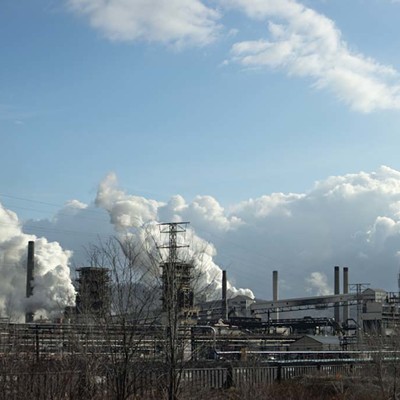From the outside, the Pittsburgh Green House looks pretty ordinary. The East Liberty building is two stories with an attic, sided with brick, and about 100 years old. If you own a home in Pittsburgh, odds are it's something like this place.
And that's just the point of this ACTION-Housing project: In a world where it's ever more important to curb energy use, the Green House is not especially green. Unlike ACTION-Housing's own new "passive house," in Heidelberg, it's not so well-insulated that it uses just 10 percent of the energy of a conventional house. Nor is the Green House much like West Penn Energy Solutions' nearby retrofitted, century-old East Liberty "net-zero" house, whose solar panels help it make as much energy as it burns.
Rather, the Green House — drafty, with much work left to do — teaches homeowners with modest means and ordinary utility hook-ups how to lower both their energy bills and their environmental impact.
The environmental stakes are significant. Researchers say that about 40 percent of U.S. emissions of carbon dioxide, the chief global-warming gas, come from buildings. But much of that energy is simply wasted, via leaks, or machinery that's overused, inefficient or poorly maintained.
Many such problems are easily addressed. ACTION-Housing should know: The regional nonprofit, founded in 1957, builds, renovates and manages affordable housing. Between 1982 and 2010, it weatherized more than 25,000 homes, making them more efficient and cheaper to operate.
The Green House is used by contractors, energy-auditors and homeowners. Since opening in March, it's had nearly 550 visitors. Classes like "Home Energy 202" range from free to $15 to attend. In November, ACTION's Jeff Susan held a 90-minute class called "Air Sealing Essentials" for two home-owners, a renter looking to buy and four young guys in work boots from the federally funded Job Corps' weatherization program.
Susan and a buddy did the initial rehab on the Green House after ACTION bought it. In class, he emphasizes things like insulating the attic, where houses lose most of their heat. He paused by the building's first-floor wall, exposed to display in cross-section several kinds of insulation — fiberglass batting, foam board. He reviewed their plusses and minuses. Blown-in cellulose, for instance, is often preferable because of how well it traps air. But any insulation can cause mildew if improperly vented. And access is challenging in the cramped spaces of old houses.
Most fixes are feasible for average do-it-yourselfers.
True, some Green House classes for energy-auditors use infrared beams to find air leaks. But as Susan notes, looking for cobwebs works, too. (Spiders like drafts.) And most gaps can be plugged with spray-foam insulation or even caulk. "Caulk's a good thing," says Susan.
Some newfangled strategies — as described on signage for a self-guided Green House tour — are both easy and affordable. Programmable thermostats (the Green House's is set at 65 degrees) keep you from overheating your house when you're asleep or at work. Compact fluorescent bulbs can cut lighting bills by 80 percent. Water-saving toilets, washing machines and shower heads can halve water usage. Certain houseplants — spider plants, orchids — improve indoor air quality. So does avoiding fumes from chemical cleaners by using combinations of natural agents like lemon juice, vinegar and baking soda.
Behavioral fixes are cheaper still. "There's all this great technology," says Green House interim director Brian Cowan. "But if you just wait 'til you get home to turn on the furnace, or turn off the light when you leave the room, you can save the money without implementing all that technology."
Knowing what not to do matters, too. Replacing old windows, for instance, might cost more than it's worth, says Cowan: Better to seal around windows, or even along baseboards, and insulate the windows with plastic sheeting.
One step to weatherization is awareness. "You can be more free from your energy bills or you can be more tied to them," says Cowan.
Confidence helps, too. Many homeowners just don't know what to look for, or mistakenly think the skills required are too difficult, says Susan. "A lot of them think they can't do it, but I think they can."














